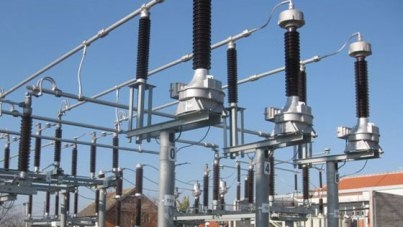Solution
The project was designed to rehabilitate the electricity supply in the regions of Arilje, Nis, Macvanska Mitrovica, Vranje, and Jagodina, affecting the lives of some 250,000 people. The substations had particular deficiencies that included power losses and unreliability, but if revamped, were seen to have the potential to support local business development. At the outset, it was decided to use a procurement plan that adapted its design to market conditions and consequently resulted in greater competition among the procurement providers, thus promoting the development of local companies.
The Bank strengthened its supervisory team by bringing in an electrical engineer with experience in substation rehabilitation, including management techniques to properly monitor project implementation, who proved to be a useful conduit of knowledge transfer.
Results
The project surpassed its original target of constructing five 110 kV substations in two phases. By February 2013, seven substations had been commissioned already and three more were expected to be completed by mid-2013. Improvements in the electricity service have contributed to the development of local industrial parks in the city of Indjija and the production of raspberries for export in the Arilje region. In all, roughly 250,000 people of both genders benefited.
On average, energy losses have been reduced by 64 percent, energy interruptions by 87 percent, and voltage drops by 62 percent. In addition, in mid-2011, Elektroprivreda Srbije (EPS) started to collect quality-of-supply indicators of the existing substations, including voltage drops, energy losses, and hours of interruption. In the region of Indjija, the new substation enabled the construction of an IT park, the water pump company “Grunfos,” and five additional companies.
The adoption of international procurement and financial management standards and the support of an experienced supervisory engineer considerably strengthened the staff and other capacities of the implementing agencies, EPS and Elektromreža Srbije (EMS), in dealing with investment projects and with the local engineering service industry in particular. The project also encouraged the development of local private companies; while three companies competed at the first tender to build new substations and install the equipment, at the last tender, six companies competed.
World Bank Group Contribution (IDA)
The World Bank contributed in two areas through concessional financing from IDA. This occurred first, through the preparation of a Regional Energy Strategy that proved to be the underlying analytical work that led to this project, making possible the design and implementation of a second, regional US$1 billion investment program using an adaptable program lending (APL) instrument. In the case of Serbia, the Bank supported the financing of US$21 million out of the project’s total cost.
Partners
There was a strong partnership between the key development participants. Building on their experience of cooperation in the power sector, recognizing the potential gains from increased trade, and seeking to strengthen regional cooperation, the Governments of the South East Europe (SEE) countries (Croatia, Slovenia, Serbia, Bosnia and Herzegovina, Kosovo, and Albania) and the European Commission in 2003 signed the “Athens Memorandum,” or the Memorandum of Understanding on the Regional Energy Market in SEE and its integration into the European Community internal energy market, whereby they formally committed to the Energy Community of South East Europe.
Moving Forward
The instructive experience from the project, the resulting development of an engineering service industry, and other positive project outcomes will serve as a platform for EPS’ plans to modernize the remaining distribution systems across the country. EPS is now in the process of laying out a corporatization and restructuring program to be implemented over the next four years that is to include the modernization of approximately 60 additional substations.
Beneficiaries
In the city of Arilje, almost 19,000 raspberry farmers are benefiting from the project. Previously, at the height of the picking season, the farmers often faced a 9 percent drop in the voltage of incoming electricity, a difficult problem for cold storage plants. As a result of the project, the city is now connected to a new, stronger grid and carries a better and more reliable electricity supply to the region.

